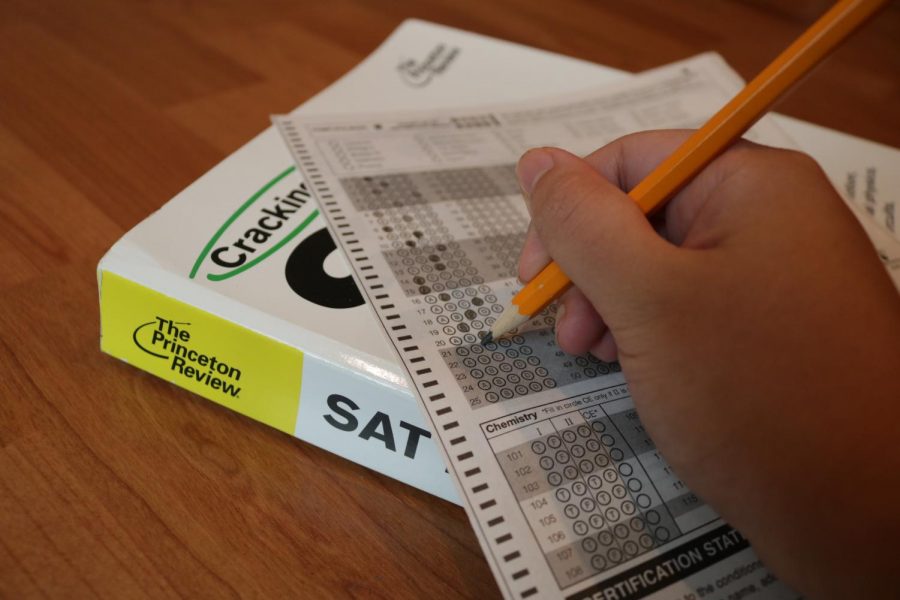The College Board needs to place student safety first
Admist the pandemic, College Board has attempted to change regulations and rules regarding the SAT testing environment.
October 7, 2020
On Sept. 26, I joined 151 thousand other students in taking the Scholastic Assessment Test (SAT) amid a global pandemic. After months of cancellations, delays, and closures, testing centers had finally adjusted to COVID-19 restrictions and set in place procedures that supposedly keep students safe while testing. With colleges now making the SAT and ACT tests optional in applications, many wonder if it is worth risking their health for an exam that may no longer be essential.
The changes to testing were seen as soon as I arrived at my center, with long, socially distanced lines of masked students stretching out from many entryways. Volunteers were stationed around the center to ensure students had little risk of being infected. Only two students per entrance were allowed in at a time, and I initially believed that this system might actually work.
However, once I entered my testing room, I realized collegeboard regulations were not as protective as they made it seem. Though the room capacity was limited to ten students and one proctor instead of the usual 30 students, desks were not spread to adhere to the six feet rule and there were unnecessary instances of contact with the proctor. In addition to this, students would often remove their masks to eat and drink during the breaks, defeating the purpose of wearing one in the first place.
Apart from the risk involved, wearing a mask through a 3-5 hour long test was uncomfortable and distracting. Foggy glasses, pulling at the ears, and pressure on my cheekbones caused me to become unfocused and less time-efficient. This added to an already stressful situation and made the experience far more grueling.
While it is true that colleges are doing away with their requirements to submit an SAT or ACT score this academic year, not enough information is known as to whether an absence of a score could harm prospective students’ chances. It is clear that colleges will be more inclined to admit students who provide scores in their applications as opposed to ones who do not. With this uncertainty, it is in the best interest of students to take the exam if they or the people they are staying with have no underlying health conditions and are not in high-risk groups.
Many things, such as the discomfort of wearing a mask, are disturbances that we have to put up with for the safety of one another. However, the College Board did not place student safety at the top of their priorities on test day. They have overestimated students and volunteers and need to set in place more stringent guidelines to ensure that no one falls ill.
The most questionable move by the College Board this time around was the possible continuation of experimental question sections. The collegeboard occasionally includes a fifth section of questions at a random number of testing centers. There is no justifiable reason for the College Board to extend the amount of time students must stay in a closed room with no air circulation increasing the risk of both the students and proctors contracting COVID-19.
Even though the College Board does not take proper measures to ensure all students safety, the advantage SAT scores provide in college applications, it is worth the risk to take during the COVID-19 pandemic. However, the College Board must adapt to this modified testing situation so that students don’t need to compromise their personal and families’ safety for academic betterment.


